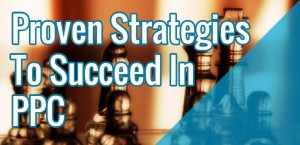Marketing is one of those subjects that, considering what it is not (namely, a religion), sometimes is overinflated with opinions.
However, marketing deals with numbers, and numbers validate a procedure.
Opinions can’t be considered a reliable marketing guide given that the marketplace isn’t a democracy. Either you do what works, or you are out.
Those opinions generally follow a trend (like in fashion), and nowadays the course of this trend is represented by
Creativity
Humor
Virality
Influencers
I have already talked about how creativity can work only within a set of methodological procedures that can be replicated during the time to bring results on a consistent basis.
Creativity for itself—from a sales point of view—is just a meaningless piece of contemporary art.
Funny is the adjective that usually sticks together with the attribute of “CREATIVITY,” and it is associated with the new educational trend of learning by doing what you love.
However, as I suppose you are an entrepreneur, doing what you love isn’t necessary at all.
There are plenty of procedures that you need to implement within your company to make it as efficient as possible and that require your ability to sustain and deal with frustration.
The third new trend is represented by VIRALITY. Today, if you do not go viral you are not a good marketer. Growth must be quick in order to make millions (of viewers, of course) tomorrow. The marketing industry has invented the label “growth hacking” to address this need.
Although there are a few things that growth marketers should consider:
There is no growth hacking in brand building.
Virality is almost always associated with what is laughable or dramatic (in PR we call it Black PR).
Virality (when positive) is associated with impressive video commercials that direct the attention of the audience to the beauty of the video commercial rather than to the attributes that distinguish your positioning.
There is no need to go viral when 99% of those who will see the viral material aren’t potential customers.
Marketing isn’t about the number of likes, comments, and shares.
Marketing is about increasing the sales of your service and products.
Operating within the marketing industry but keeping some distance from it allows me to be detached enough to make my own conclusion by analysing patterns and numbers.
Among those patterns there is a fourth new trend in the marketing industry, and that is the rise of influencers.
I do not have any problems with influencers, although they have always existed.
And I do believe they can help you sell under specific conditions that marketing departments seem to usually either underestimate or ignore.
Let’s go back to the basics.
Who is the influencer of Tesla?
The CEO of the company, Elon Musk.
Who is the influencer of Amazon?
The CEO of the company, Jeff Bezos.
Who is the influencer of Facebook?
The CEO of the company, Mark Zuckerberg.
Thus, who should be the influencer your company must rely upon?
The CEO of your company: YOU.
What those three people have in common are three well defined traits:
they all have a clear vision on what direction the world should follow;
they are role models;
they are always featured in the media.
On the basis of what the most influential people do, the question changes from “What influencer should I reach to get some traction?” to “How can I become an influencer myself?”
This is how you gain pre-eminence in your industry.
What is pre-eminence?
According to the definition given by Jay Abraham,
«Preeminence is a multifaced approach like an integrated fabric. It’s a strategic mindset.
You get preeminence by subordinating your needs and totally focusing on the other side
– the side of the client or the customer»
But let’s say that you are on the way to becoming the influencer of your own company and you need some assistance to level you up, and you team up with some other influential figure.
This is correct: you associate yourself with some influential people to raise the value perception of yourself and your influence as well.
The problem starts when you think of using influencers as an additional distribution channel to sell your own products/services.
There is a good way and a bad way to do it.
I will paint a picture for you of how not to reach out to influencers.
A couple of months after the release of my bestselling book BRAND TO SELL: Ignite your Influence and Build Your Brand with Broadcast PR, an Italian financial consultant with a core base of five thousands members in his Facebook group shared it on his own profile, as he was mentioned in it as a role model on how to build your personal brand from scratch.
The news is that, although my sales were exponential in the UK, in December I didn’t sell a single copy in Italy, in spite of this considerable endorsement.
WHY IS THAT, YOU MAY ASK?
It’s very simple. And you should never forget this rule when planning to reach out to some influencer while widening the number of distribution channels your company relies on.
People belong to his group because they want to gather financial information, not branding education.
It would have been considerably different if a marketing authority had suggested my book as mandatory reading for his own following.
This conclusion leads us to explain a better way to sell through an influencer.
To facilitate the comprehension of this dynamic, I have conceptualised what I define as THE LAW OF COHERENCE.
The LAW OF COHERENCE says that
you can leverage the attachment and the bond of trust a community has with the “influencer” only when your product/service is coherent with what the influencer is recognised for.
If an influencer is a mere entertainer whose job is to make people laugh, I would highly recommend you ignore him/her. But if the influencer is recognised as a person with a particular expertise in a determined field where he/she entertains by educating, and that field/category is complementary to yours, than you can go all in.
Business & Finance Articles on Business 2 Community(19)






